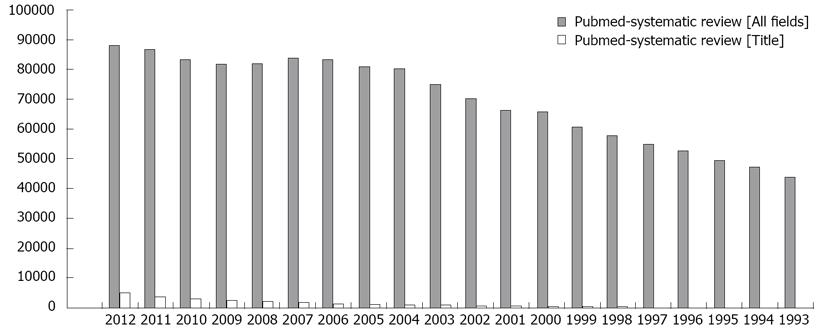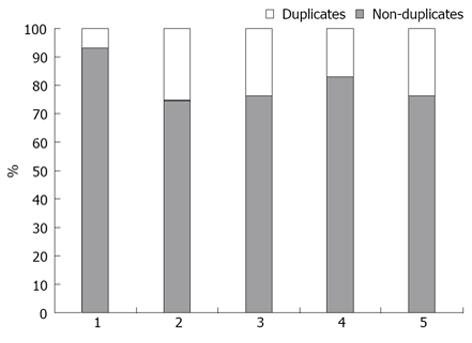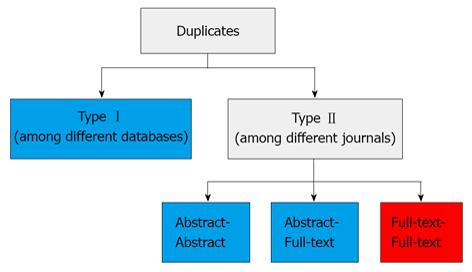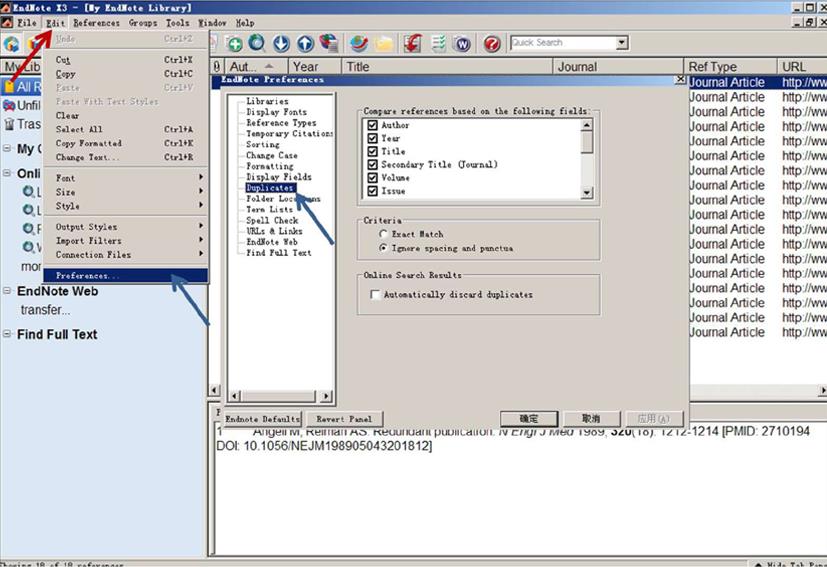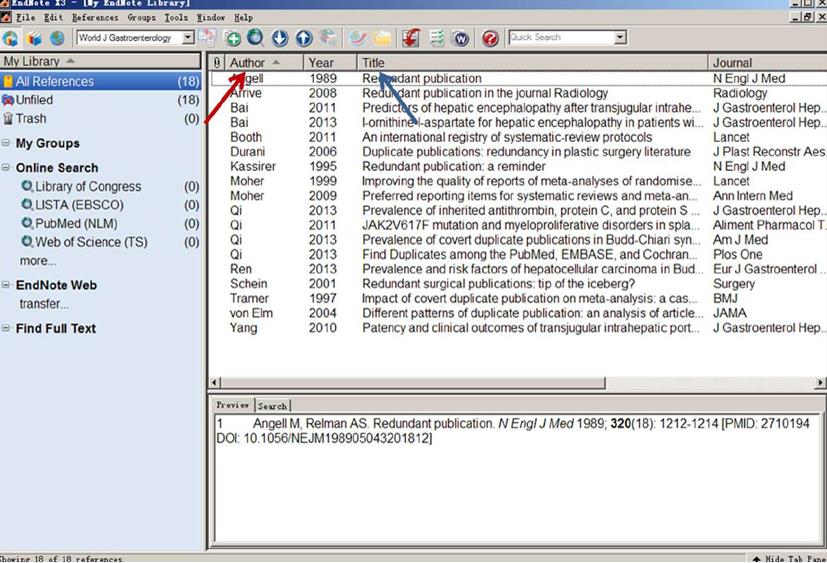Copyright
©2013 Baishideng Publishing Group Co.
World J Meta-Anal. Nov 26, 2013; 1(3): 97-101
Published online Nov 26, 2013. doi: 10.13105/wjma.v1.i3.97
Published online Nov 26, 2013. doi: 10.13105/wjma.v1.i3.97
Figure 1 Trend in the publication of systematic reviews over time.
Figure 2 The prevalence of duplicates reported in four systematic reviews conducted by our team.
1: Qi JGH (2013); 2: Bai JGH (2013); 3: Qi AJM (2013); 4: Qi PlosOne (2013) PVT; 5: Qi PlosOne (2013) BCS.
Figure 3 Classification of duplicates proposed by our team.
Types of duplicates signed by blue are often permitted, but types of duplicates signed by red are unethical.
Figure 4 Use of “Find Duplicates” command under the “References” menu.
Red arrow indicates the “References” menu. Blue arrow indicates the “Find Duplicates” command.
Figure 5 Use of the “Preferences” command under the “Edit” menu.
Red arrow indicates the “Edit” menu. Blue arrow indicates the “Preferences” and “Duplicates” commands.
Figure 6 Ordering the literatures according to the first author’s name and title.
Red arrow indicates that literatures are ordered according to the author’s name. Blue arrow indicates that literatures are ordered according to the title.
- Citation: Qi XS, Bai M, Yang ZP, Ren WR. Duplicates in systematic reviews: A critical, but often neglected issue. World J Meta-Anal 2013; 1(3): 97-101
- URL: https://www.wjgnet.com/2308-3840/full/v1/i3/97.htm
- DOI: https://dx.doi.org/10.13105/wjma.v1.i3.97









